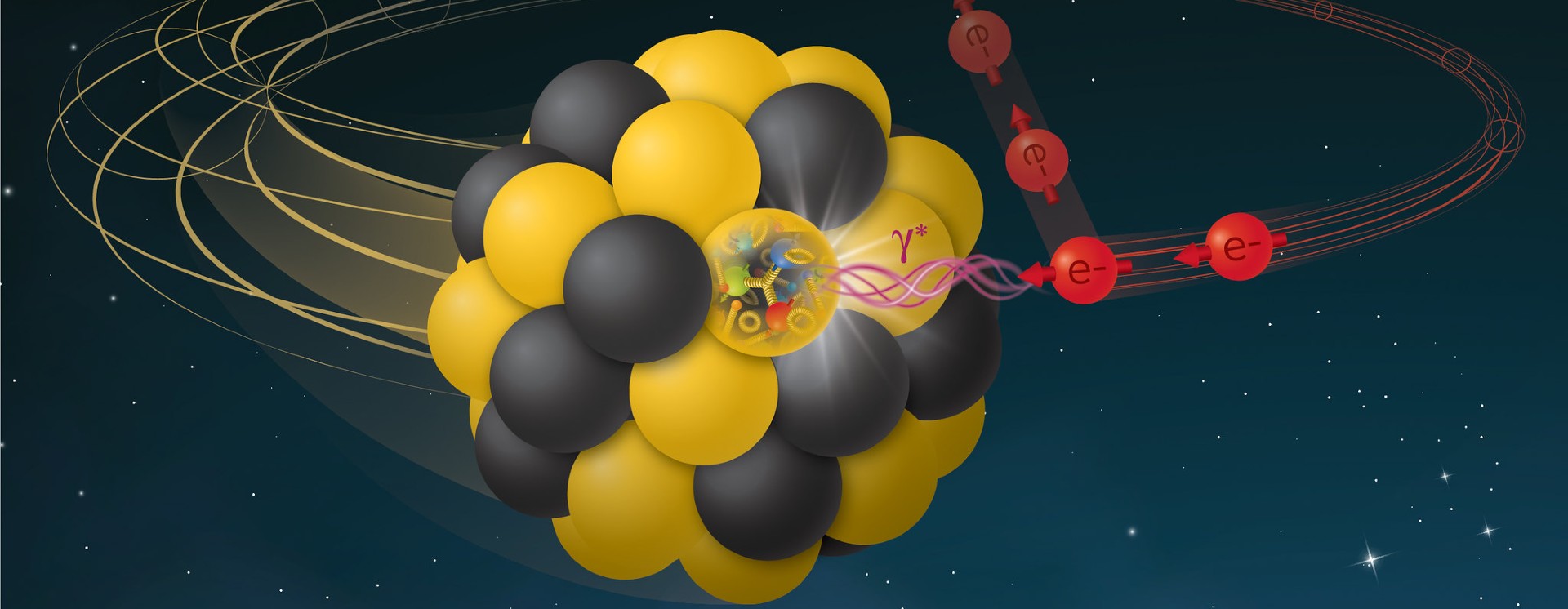
Announced by UK Research and Innovation, the funding is part of a £473 million investment in new infrastructure for UK science and innovation.
The UK-US collaboration will see new detector and accelerator infrastructure installed at the Electron-Ion Collider (EIC), a major new particle accelerator facility at the Brookhaven National Laboratory in the United States.
The EIC will use polarised electrons to look at the quarks and gluons inside polarised protons as well as inside protons and neutrons combined in larger atomic nuclei. The quarks and gluons which make up these particles are held together by strong nuclear force – the strongest force in nature.
Like a very high-powered electron microscope, the EIC will establish not only how the quarks and gluons are distributed, but also how they move and interact with each other. To enable these discoveries, the UK is developing the some of the detector technologies needed to visualise the aftermath of the collisions, as well as contributing some of the accelerator technology needed to produce the brightest possible beams.
Gaining a better understanding of these elements could lead to technological breakthroughs in other areas of science and medicine.
The Electron-Ion Collider will be a unique facility for exploring the internal structure of protons and larger atomic nuclei.
Professor Peter Jones, School of Physics and Astronomy
Principal investigator, Professor Peter Jones, of the University of Birmingham said: “The EIC will be a unique facility for exploring the internal structure of protons and larger atomic nuclei. It will reveal how quarks and gluons generate the mass and spin of the proton, and how and why the internal structure of the proton is modified in larger nuclei.
“This infrastructure award will enable the UK, in partnership with the US and other international collaborators, to develop some crucial elements of detector and accelerator technology required to deliver these insights into the nature of strongly interacting matter.”
The technology will be built by the two national laboratories operated by the UK’s Science and Technology Facilities Council – Daresbury Laboratory and the Rutherford Appleton Laboratory, together with the Universities of Birmingham, Brunel, Glasgow, Lancaster, Liverpool, Oxford and York, and the Cockcroft Institute for Accelerator Science and Technology.
Announcing the new projects, Mark Thomson, Executive Chair for the Science and Technologies Facilities Council and Infrastructure Champion for UKRI, said: “The long-term nature of this investment also helps to maintain the UK’s key position on the world stage of research and innovation for the future. On a personal level, I am particularly pleased that today’s announcement will strengthen the UK’s collaboration with the US Department of Energy, in the development and delivery of a major new scientific facility.”
